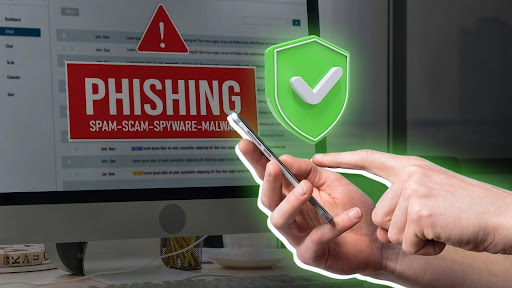Is Your Office Quietly Leaking Data?

As August rolls in and summer starts to wind down, it’s the perfect time to get back into a steady routine. That includes refreshing the habits that keep your digital workspace safe.
The truth is that cybersecurity isn’t just about complex tools and software. It’s also built on small, everyday choices.
Simple actions like spotting suspicious links, creating strong passwords, and locking your screen can go a long way in preventing cyber threats. When everyone plays their part, it supports the protection your MSP already has in place behind the scenes.
In this post, we’ll cover practical security habits you can build into your daily routine. These tips are designed to make your digital workspace safer without adding extra complexity. As always, we’re here to support you if you have questions or need help with anything discussed.
Table of Contents
Habit #1: Use Strong, Unique Passwords
Reusing the same password across accounts might feel convenient, but it creates a major security risk. If just one account gets compromised, the rest could follow.
The safer choice is to use a different password for each login. Go for combinations that are long and hard to guess. Aim for at least 12 characters, using a mix of letters, numbers, and symbols.
To make things easier, consider using a password manager. These tools securely store your credentials and make logging in quick and simple without relying on memory alone.
Skip writing passwords down or saving them in your browser’s autofill. While these shortcuts might seem harmless, they increase your exposure to cyber threats.
Habit #2: Turn On Multi-Factor Authentication (MFA)
Even the strongest password can be cracked or stolen. Multi-factor authentication (MFA) adds a second layer of protection by requiring an extra step to verify your identity, like a code sent to your phone or a prompt from an authentication app.
This small step makes it much harder for anyone to access your account without permission, even if they know your password. It’s especially important for email, cloud storage, and any tools that store sensitive business data.
Make sure MFA is turned on for your work and connected personal accounts. Most platforms offer it as a quick option in the settings.
Not sure where to start? Let us know. We can walk you through it.
Habit #3: Lock Your Devices When You Step Away
It only takes a few seconds for someone to access your computer if it’s left unattended. Whether you’re in the office, a coworking space, or a coffee shop, make it a habit to lock your screen every time you walk away.
This step protects your emails, files, and other sensitive information from unauthorized access. Even if you trust the people around you, it’s better to be safe than sorry.
Use keyboard shortcuts to lock your screen quickly or set your device to lock automatically after a short period of inactivity. These settings can go a long way in keeping your data secure.
Habit #4: Be Cautious with Email and Messaging Links
Phishing scams are among the most common ways cybercriminals trick people into giving up sensitive information. These scams often come in the form of emails or messages that look legitimate but contain harmful links or attachments.
Always take a moment to review the sender’s email address and look for odd language or urgent requests. Be especially wary of messages asking you to click a link, enter login credentials, or download a file. If something feels off, don’t interact with it.
When in doubt, report suspicious messages to your IT team or MSP. It’s better to double-check than to accidentally fall for a scam. Our team can take a closer look and let you know whether it’s safe.
Habit #5: Keep Your Software and Devices Updated
Outdated software can expose your devices to known security flaws. Cybercriminals often take advantage of systems that haven’t been updated, since they know exactly where to strike.
Make it a habit to check for updates regularly. This includes your operating system, web browser, antivirus software, and any work-related apps. Whenever possible, turn on automatic updates to stay protected without the extra effort.
Your MSP likely takes care of updates on company-managed systems. But it’s still important to keep personal devices updated, especially if you use them to check work email or access shared files.
Habit #6: Report Anything That Seems Suspicious
Finally, if something feels off, it’s always better to speak up. Whether you notice a strange pop-up, unexpected login notification, or suspicious email, reporting it quickly can prevent a small issue from becoming a major problem.
You don’t need to be certain something is a threat before reaching out. Trust your instincts and let your MSP or IT team take a closer look. Even a simple question can help catch potential risks early.
Creating a culture where everyone feels comfortable reporting concerns is one of the best ways to keep your workplace secure. If you’re ever unsure, we’re here to investigate and give you peace of mind.
Your Role in a Safer Workplace
Good cyber hygiene doesn’t have to be complicated. It’s built on the small habits you practice every day. When everyone on the team takes part, it strengthens the security measures already working behind the scenes.
Remember, you’re not expected to handle everything on your own. If you ever have questions or need help putting any of these habits into action, just reach out. We’re here to keep you safe, productive, and protected.




